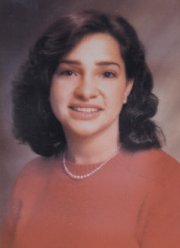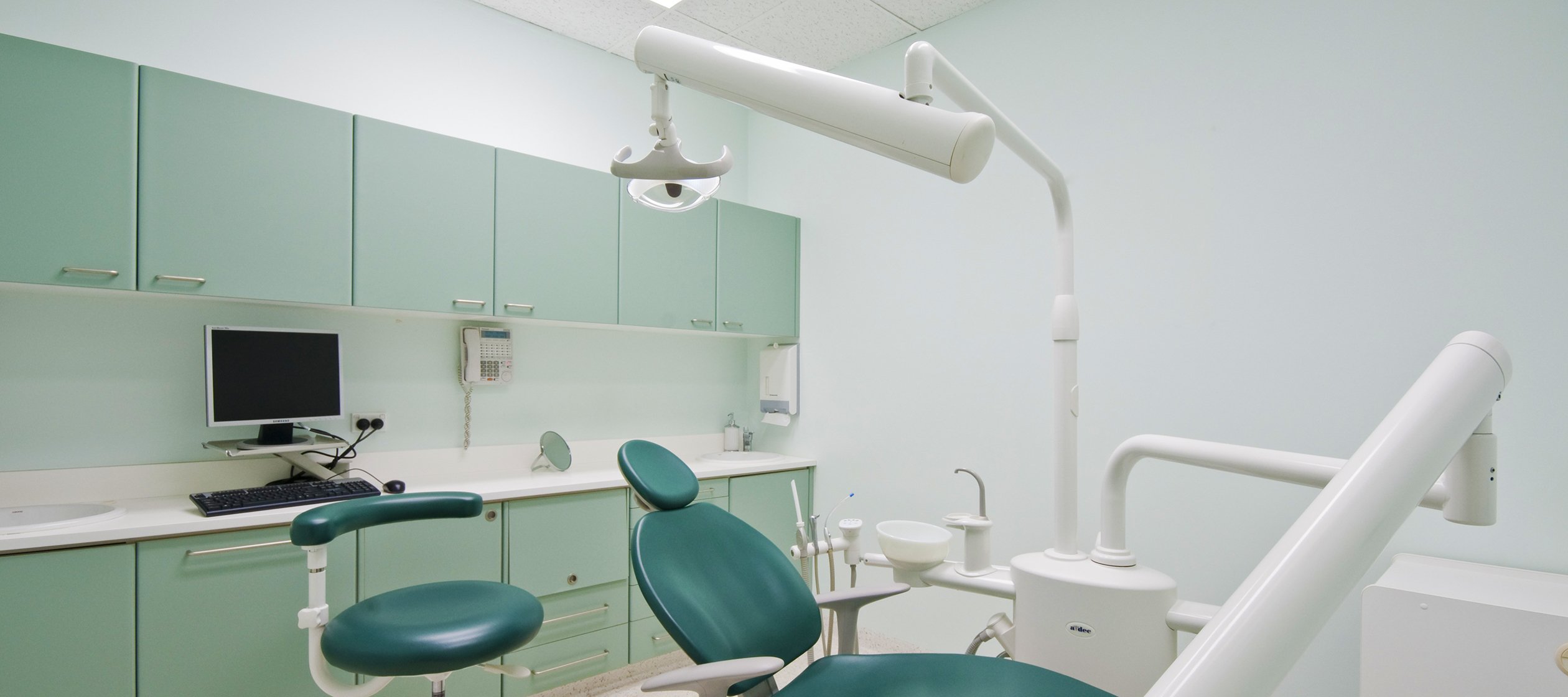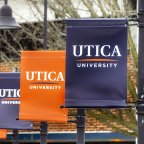

Dr. Michelle E. Haddad Memorial Seminar
29th Annual Dental Seminar
Friday, March 14, 2025 | 8:00 a.m. - 5:00 p.m.

Presented by:
Dr. James M. Rozanski Dental Residency Program
Faxton-St. Luke's General Practice Residency Program
Program hosted by:
Utica University
Program Sponsored by:
Henry Schein Dental
Biogenic Dental Laboratories
Henry Schein Dental
Biogenic Dental Laboratories
Additional Sponsors:
Biogenic Dental Laboratories
Biogenic Dental Laboratories
Continuing Education Credit
Henry Schein sponsors the program and is an ADA CERP Accepted National Program Provider of MAGD/FAGD credit. Attendees will receive 7.0 hours of Continuing Education Lecture Credit for attending the entire presentation.

Dr. Michelle E. Haddad
(October 15, 1959 - June 10, 1996)
Dr. Michelle E. Haddad was born to Dr. Louis and Gloria Haddad. While attending Utica University, Dr. Haddad spent hours observing patient care at the Faxton St. Luke’s Healthcare (FSLH) (formerly St. Luke’s-Memorial Hospital) Dental Health Center. After graduating from Utica University in 1981, Dr. Haddad began her formal dental education at SUNY Buffalo School of Dental Medicine. Prior to obtaining her dental degree in 1985, Dr. Haddad served a summer internship at the hospital’s General Practice Residency Program and subsequently became a dental resident upon being awarded her doctorate in 1985. Following completion of her one-year post-doctoral training program in 1986, Dr. Haddad entered private practice with her father. Dr. Haddad remained involved with the residency program as a volunteer attending and served as chairperson of the Hospital Dental Section.
Updated fees listed below.
- Dentists: $250
- Auxiliary Staff: $100
- Former Residents and Attendings: $100
- Former Residents and Attendings Auxiliary Staff: $50
- Vendors: $150
Registration fee includes a lunch buffet, morning and afternoon break refreshments, continuing education certificate, and all materials.
The registration fee helps fund the following:
- Dr. Michelle E. Haddad Scholarship Fund (at Utica University)
- Dental Hygiene Scholarship Fund
- Dental Residency Program
- Dr. Thomas Hebert Memorial Scholarship
Call 315-792-3362 for information about the program or the cancellation and refund policy. Requests for refunds must be made on or before Friday, March 7, 2025. We reserve the right to cancel this program at any time.
Speakers and Seminar Topics
Guest Speaker - Dr. Dana Bergenfeld
Dana M. Bergenfeld, DDS is passionate about the niche of special care dentistry. She started off, however, receiving her Bachelor of Arts in Botany from Connecticut College in New London, CT in 2017. She continued on to Stony Brook University School of Dental Medicine, and subsequently matched with her now husband, Dr. Alexander J. McGuiness at the GPR through MVHS at Faxton-St. Luke’s with Dr. Evelyn Salgado as program director.
Dr. Bergenfeld found herself striving for a patient-centered approach. She wanted to delve into special populations to gain experience on how to provide the best care for patients with complex medical histories. As a new dentist, she gained perspective focusing on geriatric and special needs populations with HealthDrive and Westchester Institute for Human Development. Due to family history, Dr. Bergenfeld applied, and was accepted, to the Dental Oncology Fellowship at the Memorial Sloan Kettering Cancer Center in Manhattan, NY, which she completed in 2024.
Currently, Dr. Bergenfeld continues to practice in a clinic and mobile van for special needs and geriatric populations. She also receives referrals from this work for comprehensive dental care under general anesthesia at Westchester Medical Center in Valhalla, NY. She also serves as a general dentist and dental oncologist in private practice traveling throughout Connecticut offices affiliated with North American Dental Group. Dr. Bergenfeld values interdisciplinary health care and a team approach, so she is currently in a Leadership Education for Development and other related Disabilitied certificate program to bridge to gap in special needs diagnosed in early intervention.
Dr. Gagandeep Kataria
Dr Kataria grew up in India and obtained her BDS (Bachelor of Dental Surgery) from Baba Farid University of Health Science, Punjab. After practicing dentistry in India for 4 years, she moved to the United States where she completed DDS (Doctorate of Dental Surgery) degree from the University of Oklahoma College of Dentistry. While at Oklahoma Dental College, Dr. Kataria was actively involved in the American Student Dental Association. She served as vice president of the college’s Diversity Council and was also chair of various other groups, such as the Staples Society. Dr. Kataria graduated from OU College of Dentistry in the class of 2024 with distinction and is an active member of the ADA. She thoroughly enjoys dentistry and aims to deliver aesthetically pleasing results in her work. Dr Kataria is looking to further her education in dentistry with a focus on providing aesthetic and prosthetic dentistry, to offer the best possible dental care for the population in Utica.
Botox
The array of treatment options in dentistry is rapidly expanding, with unconventional methods like botulinum toxin (BT) gaining popularity. Traditionally recognized for its cosmetic use in reducing facial wrinkles, BT is now being investigated for various dental conditions. This presentation will focus on the applications of BT in the maxillofacial region, providing dental practitioners with a temporary and reversible treatment alternative for issues such as parafunctional clenching, temporomandibular disorders, trismus, facial nerve palsy and headaches. In today's competitive dental landscape, dentists are seeking innovative ways to attract patients, and Botox offers both aesthetic and therapeutic benefits. However, many practitioners remain unaware of the unique risks associated with its use in dentistry. As society becomes increasingly focused on beauty, technologies like Botox are emerging to address various facial anomalies.
Learning Objectives
- Learning the history and origin of Botox, focusing on the bacterium it derives from and its initial medical uses.
- Understand the applications of Botox in dentistry.
- Explore the cosmetic uses of Botox, including its effects on various facial lines and conditions.
- Analyze the therapeutic applications of Botox beyond cosmetic uses, emphasizing its role in treating jaw disorders and muscle pain.
- Evaluate the financial implications of integrating Botox services into dental practices, including startup costs and potential revenue.
- Identify the necessary training and certification requirements for dentists to administer Botox safely and effectively.
- Understand the various risks and side effects associated with Botox treatments, focusing on those pertinent to dental applications.
- Establish criteria for determining the appropriate use of Botox in patient treatment plans and when to refer patients for alternative therapies.
- Review state regulations governing Botox administration in dental practices, including consent requirements and patient education protocols.
Dr. Giancarlo Santiago Rodriguez
Dr. Giancarlo Santiago Rodriguez, is a dentist currently undertaking a General Practice Residency in the MVHS program in Utica, New York. He carried out his dental education at the Dental School of the University of Puerto Rico. In that time Dr. Santiago has had more interest in the surgical, periodontal, and special needs/patient management areas and shown proficiency in this as well. His experience and time in the Dental School of Puerto Rico has given him the necessary tools and guidance to deliver excellent patient care, apply leadership skills and maintain a strong work ethic while maintaining a positive attitude when treating patients and collaborating with his peers inside and outside the clinic.
Giancarlo also has been involved in several other activities related to the dental field such as service trips to the Dominican Republic, participating and assisting as a photographer in the Instituto Panamericano de Implantologia y Rehabilitacion Oral (IPIRO) and carrying out extensive rotations in patient management, treating special needs patients and treating bedridden patients.
Dr. Santiago has also the fortune to be exposed to research methodology and practice during his undergraduate education at the Inter American University. Under the guidance of the environmental engineering professor Dr. Nedim Vardar, they both work on his research in air pollution, analyzing dangerous chemical compounds in the air and climate change patterns at a nano-scale level for 4 years. All of this has aided Dr. Santiago in the application of evidence-based dentistry in each one of his cases.
After his Dental Residency is completed, Dr. Santiago has demonstrated a pique interest in dental implantology and plans to participate in a Dental Implant Fellowship at the same time while he works in Utica for at least a long period of time.
Robotics
Digital dentistry and A.I. in dentistry have been considered one of the most trending topics in the development and advancements of both dental research and clinical practice. But there is another area that is not talked about so much, Robotics. Robots are autonomous machines that can be designed to perform tasks that are tedious, dangerous, or complex for humans. These robots can be controlled by humans or operate autonomously. Robotics have shown a great potential in enhancing precision and efficiency in the medical field. In particular, robotics in dentistry is revolutionizing patient care with advanced technological integration, minimally invasive procedures, and improved outcomes and patient experiences. Robotics technology can, are and will change diagnostics and treatment protocols in dental medicine. Robots can perform repeated workflows for an indefinite length of time while enhancing the overall quality and quantity of patient care. Also the use of robotics can aid the Dental professionals in order to avoid wear and deliver high quality dental treatment. Robotic systems in dentistry have advanced significantly over the past decade, from simple and earlier robots which required a human operator to robots that can perform patient intervention or remote monitoring autonomously. However,little research data on the therapeutic reliability and precision of autonomous robots are available and its not without its limitations. Not everybody shares positive motivation and opinion and since this is such a vanguard topic and field much skepticism is expected and understood. The purpose of this presentation is to aim and explore the possibilities and pros & cons of the use of Robotics in the Dental Medicine field. It has as an objective to provide dental practitioners with a comprehensive and transparent evidence-based overview of hardware and software robotics initiative in all fields of dentistry. This presentation dives into an in-depth concept of robots in digital dentistry, highlighting major contributions and impact in clinical scenarios. It will discuss the limitations and gaps between the research and applications of dental robots in different fields of dentistry such as oral and maxillofacial surgery, dental implants, prosthodontics, orthognathic surgery, endodontics, and dental education treatments.
Learning Objectives
- Use of Robotics in dentistry in the Dental Clinic
- Use of Robotics in Dental Education
- In which area of Dentistry can Robotics be used in General Dentistry?
- In which area of Dentistry can Robotics be used in Periodontics?
- In which area of Dentistry can Robotics be used in Endodontics?
- In which area of Dentistry can Robotics be used in Dental Surgery?
- In which area of Dentistry can Robotics be used in Pedodontics?
- In which area of Dentistry can Robotics be used in Orthodontics?
- In which area of Dentistry can Robotics be used in Prosthodontics?
- In which area of Dentistry can Robotics be used in Special Needs?
- How can Robotics be used to treat difficult cases and patients?
- How can Robotics be beneficial for older Doctors?
- How easy can it be to use and to understand robotics and their softwares?
- Robotics Cost and investments
- Robotics management and maintenance
- Nanorobotics
- A.I. applications and robotics in Dentistry
- Robotics vs Humans in the dental field, which one is superior?
- Will robotics replace us?
- What the future holds for Robotics in Dentistry?
Dr. Jonathan Javier Santiago Rodriguez
Dr. Jonathan J. Santiago Rodriguez is a native of Bayamon, Puerto Rico, and graduated from the University of Puerto Rico with a bachelor’s degree in Human Biology. He completed his Doctorate of Dental Medicine at the University of Puerto Rico Medical Sciences Campus. During his doctorate, Dr. Santiago was the Vice president of the American Association for Dental, Oral, and Craniofacial Research (AADOCR), a Conference Manager of AADOCR for webinar planning, and part of the leadership directive committee. He has a passion for teaching and enjoys serving in mentorship opportunities for incoming generations of dentists in the field. He has also partaken as staff of the Pan-American Institute of Implantology and Oral Rehabilitation (IPIRO) for the past 9 years and has been the lead media creator of the institute. He aspires to be an inspiration by contributing to the comprehensive understanding of the dental world within the education platform, particularly through the importance of proper medical photography. Through this chapter of his career, Dr. Santiago seeks to expand on his knowledge of general dentistry through the Faxton St. Luke’s GPR Program and aspires to continue his professional growth in a Prosthodontics post-doctorate specialty program.
The Role of Professional Cameras in the Dental Environment
In modern dentistry, professional cameras have become essential tools that support diagnostics, treatment planning, and patient communication. This guide explores the advantages of using a professional camera in dental practice, emphasizing how high-quality imagery enhances both clinical documentation and aesthetic evaluations. We will discuss the components of a professional camera, including the body, lens, and flash, and how each contributes to capturing detailed, accurate images of dental structures and treatments.
Additionally, understanding key camera settings such as ISO, aperture, and flash can empower dental professionals to achieve optimal image quality. The ISO setting allows for adjustments to light sensitivity, enabling clear images even in challenging lighting conditions, while aperture controls the depth of field, ensuring focus on intricate details within the oral cavity. Flash techniques further improve image clarity, reducing shadows that may obscure vital details. By mastering these components and settings, dental professionals can improve the quality of patient documentation, facilitate case presentations, and elevate their practice with visually impactful results. This overview provides a foundation for successfully incorporating photography into a dental environment, benefiting both practitioners and patients alike.
Learning Objectives
- Learn the importance about photography in the dental environment
- Learn the components of a camera and what they are for
- Learn which camera is better for your scenario
- Be able to recognize the components of a camera
- Learn to manage and maintain a camera
- Learn how to use in split second the correct way to take a good photo in any scenario
Dr. Judith Rosario, DMD
Dr. Judith Rosario-Llantin was born in New York and raised in Bayamon, Puerto Rico. After studying Dental Assistant and Dental Hygienist, she attended the School of Dental Medicine at the University of Puerto Rico, Medical Science Campus. She worked with the underserved population in Puerto Rico and at the Health Department of Louisburg in North Carolina. She enjoys family, music, pets and painting.
Pet Therapy for the Dental team and Patients
Dog assisted therapy in Dental Clinics it has been adopted for a while now to reduce the anxiety during dental treatment. The presence of pets at the dental clinic, not only has been helpful for the patients but, to de employees as well. There are some hazards related to possible risks to health and safety for patients, employees and for the therapy dog, that needs to be considered before implementing this service in the dental clinic. Rules, laws and guidance on how to control and minimize the risks for patients, staff and dentist should be discussed and provided before offering this service at the Dental Clinic.
Learning Objectives
- Benefits to have a therapy dog at the dental clinic.
- Understand and follow the rules, laws and guidance before implementing dog therapy service.
- Potential risks to the health of patients, staff, dentist and therapy dog.
- Maintenance of a clinic with the presence of therapy dogs.
- Managing the therapy dog in the clinic.
- License and Permits
Contact Us
Office of Advancement

Office of Advancement
1600 Burrstone Road, Utica, NY, 13502
(315) 792-3362
I would like to see logins and resources for:
For a general list of frequently used logins, you can also visit our logins page.
